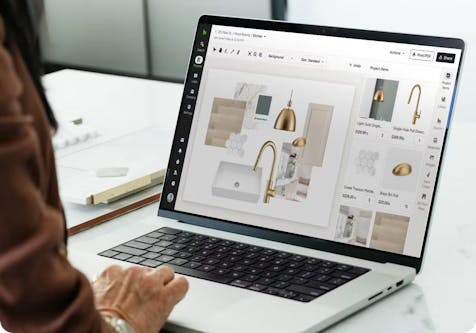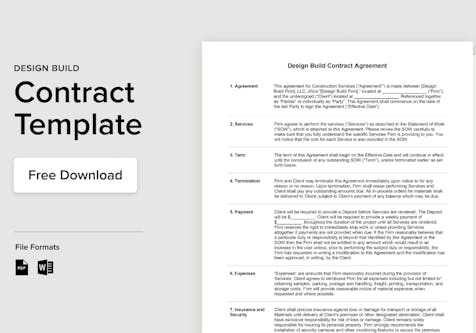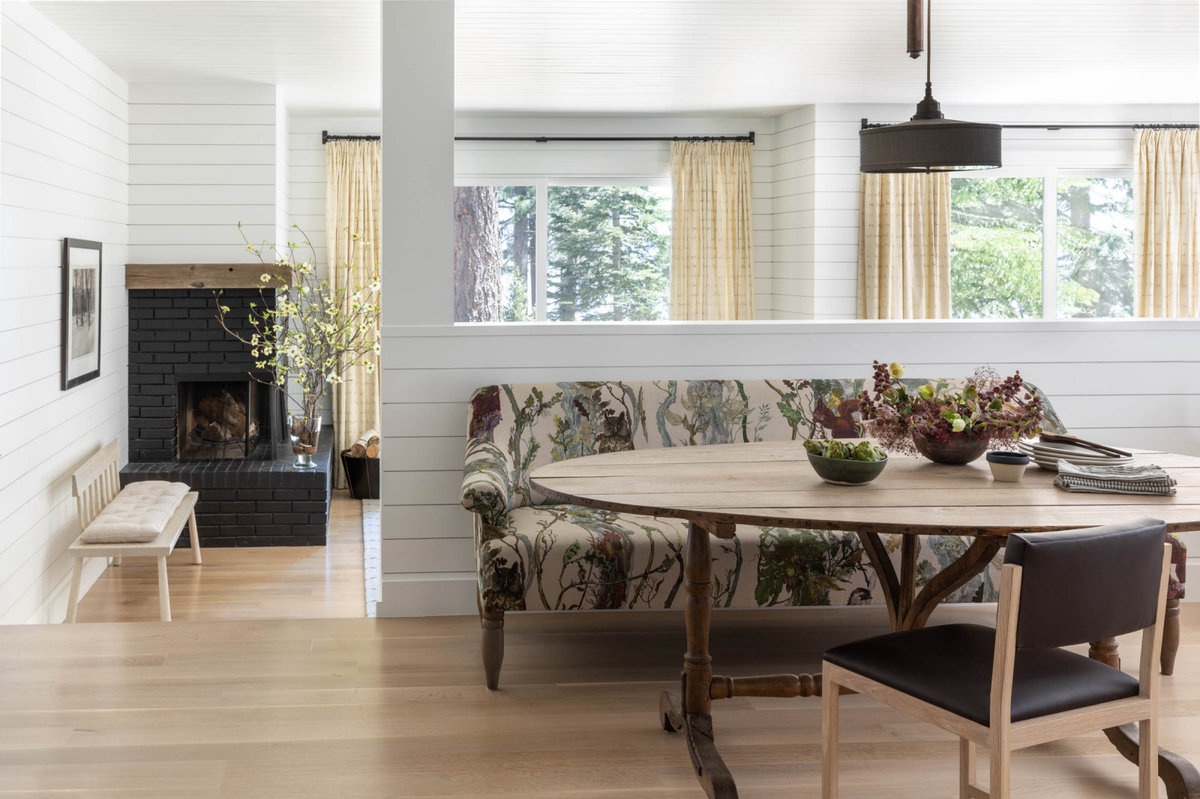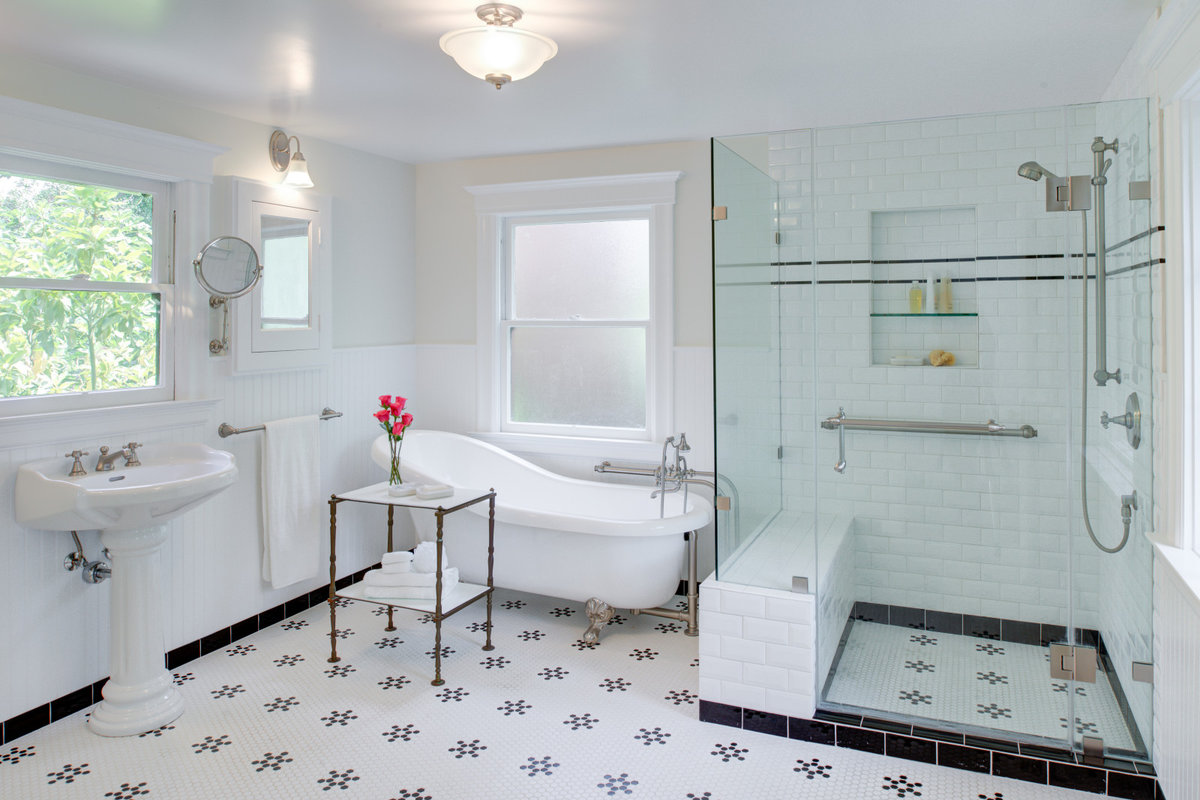The Difference Between Concept Boards and Mood Boards in Interior Design
In this article, we explore the differences between concept boards and mood boards, and how interior designers use these visual presentation tools in the art of interior design to create, evolve and impart the concept and vibe of their design proposals.

Introduction to Interior Design Concept Boards
When it comes to the creative process in interior design, mood boards typically take the spotlight over concept boards. But both tools are important partners in the design journey. Each provides a canvas for professional designers to convey and perfect their design ideas in slightly different ways. While a mood board communicates the specific details and products envisioned for a home or room, a concept board reflects the overall tone or feeling intended for the space. In this article, we help define interior design concept boards and their key differences from mood boards in the larger project process. We'll explore specific interior design concept board examples, and provide you with ideas to make your own concept board.

What is an Interior Design Concept Board?
A concept board is a presentation tool that interior designers use to evoke the general, overall feeling - or concept, if you will - of a design project. Sometimes called a presentation board, a concept board includes photographs, sketches, textures and other elements conveying the overall vision or evoking a feeling. Think of it as the interior design version of a vision board popular for affirming dreams and desires at the start of a new year. Like a vision board or dream board, a concept board is a collage of images, and pictures designed to serve as a source of inspiration and motivation. A valuable tool for brainstorming design styles or refining a desired aesthetic, the elements of a concept board don't translate to literal products or specific room details. Those come later.
Concept Boards vs. Mood Boards for Interior Designers
We acknowledge that the interior design presentation board landscape can be confusing. Design pros and design enthusiasts often refer to concept boards and mood boards interchangeably. Even the terminology can become a bit murky since concept boards communicate a project’s overall sources of inspiration and its “mood,” whereas mood boards, despite the nomenclature, tend to convey more concrete design ideas for a specific project.
However, in the interior design discipline these two board types represent distinct and different purposes in the project planning process:
1. A concept board conveys a more abstract vision.
A designer considering a rustic farmhouse theme for a client might present a photo of a pristine barn sitting in a vast field, complemented with closeups of weathered barnwood texture. There may be a photo of a basket of fresh farm eggs along with a color palette featuring complementary shades matching the eggshell hue, or a tactile rattan pattern reminiscent of the wicker basket.
Another designer going for a modern coastal theme might include a photo of the ocean surf, an image of someone dipping their toes into the sea, and sweeps of paint colors to imitate the tones of the misty, salt-drenched sky.
In both of these examples, these concept boards do not actually assume literal interpretations - such as that the homeowner lives at the pictured beach, or that a farmhouse aesthetic home requires incorporating a chicken hutch, for example.
2. Mood boards provide a more literal, grounded picture of the design concept.
On the other hand, a mood board brings a dreamy design into the reality of a clients’ particular home and how it will be appointed with furnishings, accents and fixtures. Mood boards translate the "vibe" originally communicated in the concept board into an actionable vision for the specific design project.
Here are some key ways a mood board help design professional perfect their design plan:
- It paints a tangible, visual image of a specific design project.
- Product imagery, paint samples, and fabric swatches specific to the design and space are incorporated in the mood board.
- Some designers skip straight to the mood board because it can stand on its own as the only type of board presented to a client. However, many designers see the value of using a concept board as an inspirational precursor to the mood board phase of a design project.
Putting Mood Boards to Work
The elements of a Mood Board help a designer present their vision for a specific room/project down to every detail. A mood board for a modern coastal bathroom design might include a close up of the blue herringbone shower tile, the digital or physical paint sample of Sherwin-Williams accent trim paint and a clipped image of an exact tub the designer is proposing. A designer compiling a mood board for a mid century modern boho style living room can choose the exact sofa, walnut sideboard, tiered bookshelf area rug, sphere chandelier and naturally dyed wool rug envisioned for the space. In both cases, these bring the client a clear picture of how the design theme will look in their home.
Design professionals who prefer using software to create a digital mood board can easily insert clipped digital images of the exact products they recommend using the Houzz Pro Clipper. The tool lets them clip and edit images of furniture, fixtures and finishes directly from the web to their digital product library so all are available with a click to add to their mood boards, proposals and more. The images also link to more details about each element. The products can be easily switched out with those they have waiting in the wings to offer alternative options to clients. Learn more about using mood boards to create awesome designs in our blog post How to Make an Interior Design Mood Board.
Interior Design Concept Board Ideas & Examples
Since concept boards are not intended to address the specific space details that a mood board does, they are an useful inspirational starting point in the creative design journey. Designers use concept boards to communicate an overall concept for a space with images, textures and colors before getting locked into specific products and styles. While designers typically use concept boards at the beginning of the design process to get the creative juices flowing, they tend to use mood boards later in a project phase while presenting actual products and ideas to clients. A concept board provides them a tool for communicating a larger overall inspiration or vision while keeping the door open for tweaking, transforming, or even changing the concept along the way.
Traditionally, a concept board starts with some type of physical board as its base. Tacked on are sketches, and photographs torn from magazines, or printed from online. They often include physical tactile elements such as textiles, tiles, beads or other items that clients can touch. Colors may be painted directly on the board. Now, designers also create virtual versions of concept boards incorporating the same elements with photos, videos and other media that evokes a similar feel and look as a physical board.
Since mood boards are such a common client presentation tool, it may appear that concept boards are a bit overshadowed in comparison. However, they can play a crucial part in the early evolution of a design project, helping to shape it and bring it to unexpected places that make for a better project. A client, for example, may put more emphasis on lighting and color options than first planned after connecting to the feeling evoked by an image of the first light of morning; or the sheltering comfort prompted by a photograph of a forest may prompt a client to incorporate more wood tones in their finishes and furnishings than first considered.
Whatever the sought after vibe an interior designer is aiming for, presenting a concept board can help them bring it to life early in the stage of a project to determine if it resonates with their client. This also has the advantage of making it easier to refine the design and change direction before the design phase is too far along and before specific products have been chosen and ordered.
Conclusion
With the popularity of mood boards as the presentation tool of choice throughout the interior design industry, it is easy to overlook the benefits of complementing them with the use of a concept board. Yet concept boards can play a key role in inspiring creative design, especially in the early stages of a project. Designers use concept boards to communicate an overall theme and feel of a space, and then take the journey one step further by using a mood board to apply specific elements and products to fit the actual project space. Taken together, these tools provide designers with a creative and competitive edge while ensuring they are meeting the dreams and expectations of their clients.
Explore how Houzz Pro software helps interior designers craft compelling mood boards as effortlessly as possible.

Want advice delivered to your inbox?
Unlock industry insights and updates for contractors and design pros
By signing up, I agree to the Houzz Terms of Use and Privacy Policy and that Houzz may use my information to contact me about relevant content, products, and services.









Join the conversation by commenting or asking a question below. The Houzz team reads every single comment, and we’ll get back to you by email if you need us!